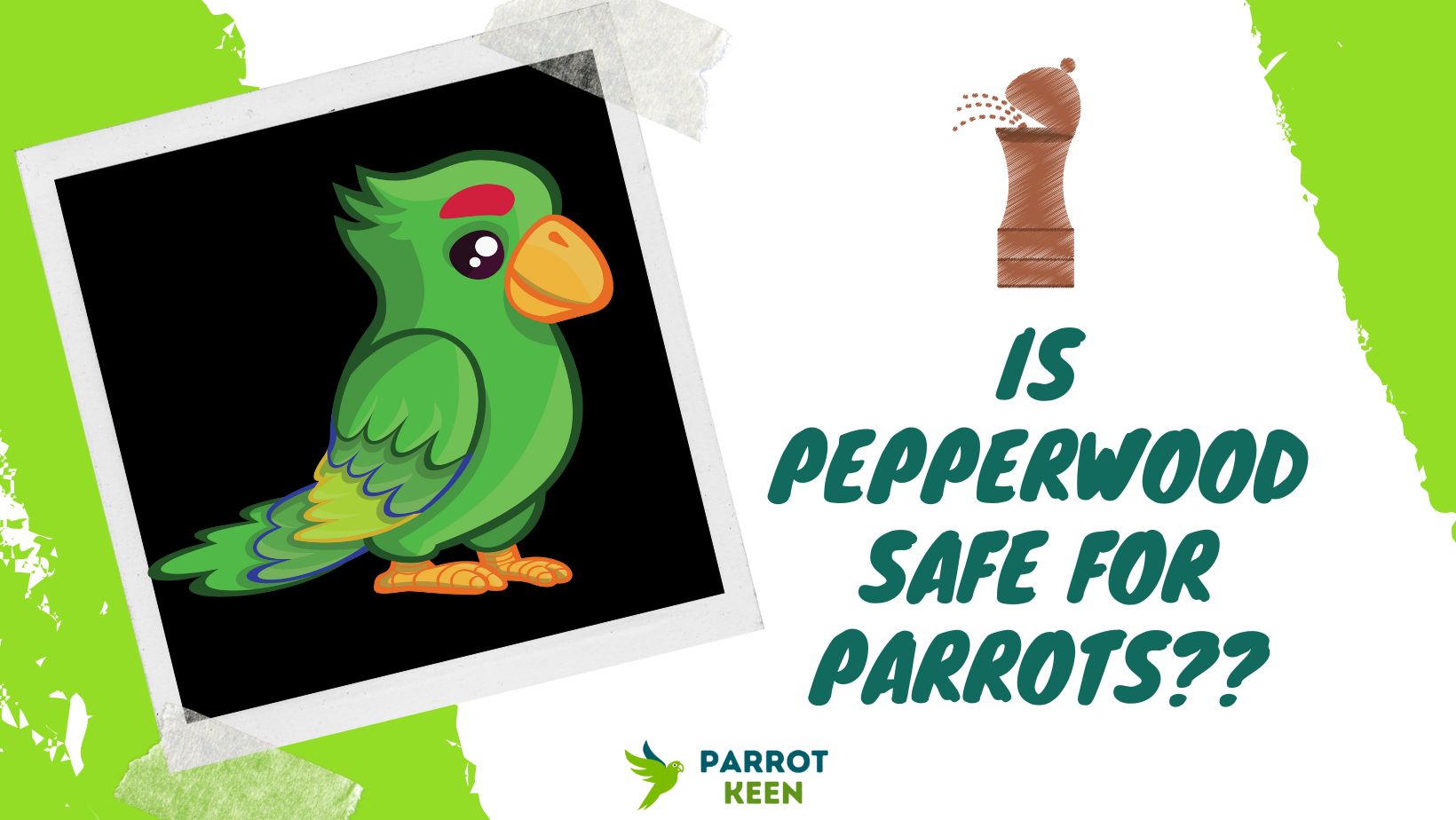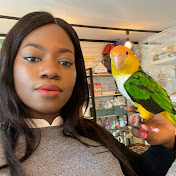
My readers frequently ask me, “Is Pepperwood Safe For Parrots”. This post aims to provide you with the benefits and risks of getting a Pepperwood cage for your feather friend if you have already purchased one or are planning to get one.
If you’re a bird lover, you’ve probably heard of Pepperwood. It’s a popular tree that many parrot cages are recently built. But is Pepperwood safe for parrots? The answer might surprise you!
In this blog post, we will discuss the safety of Pepperwood for parrots and provide some tips on how to keep your feathered friends safe.
Many bird enthusiasts have used pepperwood in their aviaries and nests for years. Some even swear by its power to keep predators away. But is this common household spice safe for our feathered friends? Let’s take a closer look.
What is pepperwood?
Pepperwood, also known as California bay tree, laurel, Myrtle, peppernut tree, and Umbellularia californica, is a large evergreen tree that grows up to 30 m tall.
The bark is smooth and reddish-brown, while the leaves are dark green and glossy with a crinkled appearance. Pepperwood is native to California and Oregon but can also be found in some parts of Mexico.
The wood from this tree is strong and hard, making it a popular choice for furniture and woodworking. However, when cut fresh, pepperwood can be toxic to some animals because of its high oil content.
In particular, parrots should avoid this type of wood if preserved with chemicals and cut fresh as it can cause gastrointestinal distress and even death.
Is Pepperwood safe for parrots?
The answer to this question is a bit complicated. While the berries of the pepperwood tree are safe for parrots to eat, the tree’s leaves and bark can be poisonous.
Natural Pepperwood is safe for parrots if it is dry and aged. However, if the wood has been treated with chemicals or is cut fresh, it can be toxic to your feathered friend.
To be on the safe side, we recommend avoiding Pepperwood altogether. If you must use it, make sure that the wood is dry and aged before adding it to your aviary or nest.
While poisoning from urushiol is rare, it can occur if a bird ingests a large amount of the leaves or bark. Symptoms of urushiol poisoning include difficulty breathing, vomiting, and diarrhea. If you suspect your bird has been poisoned, contact a veterinarian immediately.
However, using Pepperwood to build a cage or nest for your Parrot is perfectly safe. The urushiol is only found in the leaves and bark, so there is no need to worry about your bird coming into contact with it.
If you’re using Pepperwood to build a cage or aviary, only use the branches. The leaf of the tree is where the urushiol is concentrated and should be avoided.
In conclusion, Pepperwood is safe for parrots to chew, but the tree’s leaves and bark are poisonous.
Benefits of Pepperwood to Parrots
There are some benefits to why we think you should get a cage or perch built out of pepperwood.
- First, it is a very resistant wood. Not only will it last long, but it is also resistant to bites. If you have an unruly parrot who loves to bite everything in sight, this might be the best solution. It will keep your Parrot’s beak conditioned and shaped while also giving them something to gnaw on that won’t break easily.
- Another great benefit of pepperwood is that it is light wood. This means that it won’t add too much weight to the cage or perch, making it easier for you to move around if need be.
- Lastly, pepperwood is an excellent material for perches because it has a rough surface. This gives your Parrot’s feet something to grip onto, preventing them from slipping and potentially injuring themselves. Also, it Improves circulation by exercising your Parrot’s legs and claws.
How can I keep my Parrot safe?
You can do a few things to keep your bird safe from pepperwood poisoning.
- Don’t use Pepperwood that has been sprayed with chemicals
Using pepperwood that has been sprayed with chemicals can be dangerous for your bird. If you’re not sure if the pepperwood has been treated, it’s best to avoid using it.
- Avoid pepperwood with pesticides.
Making use of pepperwood that has been sprayed with pesticides is also not a good idea. Pesticides can be very harmful to birds and should be avoided at all costs. If you use Pepperwood, make sure it’s from a safe source.
When using Pepperwood, it’s essential to ensure that the tree has not been treated with chemicals or pesticides. You can do this by buying Pepperwood from a reputable source.
- Don’t use pepperwood that is currently cut down.
You should also avoid using Pepperwood, which has been cut down recently. The tree releases urushiol when it’s cut, so it’s best to wait a few weeks before using the wood.
- Remove any leaves or bark that might be within reach of your bird. You should also remove any leaves or bark that might be within reach of your bird. This will help prevent them from coming into contact with the urushiol and becoming poisoned.
By following these simple tips, you can help to keep your bird safe from pepperwood poisoning.
Why do parrots love to chew on wood?
Parrots love to chew on wood because Parrots and wood go hand-in-hand. Wood chewing is a perfectly natural behavior for parrots.
It helps them to keep their beaks trimmed and sharp. Chewing on wood also provides your bird with mental stimulation and can help to relieve boredom.
Also, chewing wood provides a sense of personal satisfaction to your Parrot, so it’s important to allow them to indulge in this behavior.
Chewing on wood is a perfectly natural behavior for parrots, and there are many benefits to it. If you provide your bird with plenty of safe toys and branches to chew on, they shouldn’t need to chew on your furniture or other household items.
However, if your bird does start chewing on household items, it’s crucial to provide them with an alternative such as a piece of wood or a chew toy. This will help redirect their chewing behavior and prevent damage to your home.
What kind of pepperwood should you stay away from?
There are kinds of pepperwood that are safe for parrots, and some aren’t. The most important thing to consider when deciding if a certain type of pepperwood is safe for your Parrot is the toxicity of the tree. Here are the kinds of pepperwood you should avoid.
- The wood has been treated with Pesticides.
You should avoid woods that have been treated with Pesticides. Pesticides can be harmful to your Parrot if ingested.
Some people may think that they can get away with using treated wood if they sand it down first, but this is not the case. The chemicals in the pesticides can still be present in the wood even after sanding.
If you’re not sure if a piece of wood has been treated with Pesticides, it’s best to err on the side of caution and avoid it.
- Woods that have been sprayed with chemicals
You should avoid pepperwoods that have been chemically preserved in any way. This would include pressure-treated lumber, which has been infused with chemicals to make it last longer. It’s best to avoid these woods altogether, especially if your Parrot will be chewing on them.
- Consider the type of Gum used in the cage
You should also consider the type of Gum used to make your bird’s cage. If you have a parrot, you’ll want to avoid any kind of wood that is poisonous to them. Some gums are very dangerous to parrots.
So, if you’re not sure what kind of Gum your cage is made out of, it’s best to ask a professional or do some research. Better safe than sorry.
Conclusion: Is Pepperwood Safe For Parrots?
While Pepperwood is generally safe for parrots, it’s always best to check with a veterinarian before getting your bird any new cage for safety. And as always, be sure to keep an eye on your bird when it’s chewing anything new, just in case there are any adverse reactions.
Have you ever placed your Parrot in a Pepperwood cage or next? What was its reaction? Let’s know in the comment section.

Hi, I am Thersa and Welcome to ParrotKeen, your number one place to get all the information you need about your cute parrot. I hope You Find it useful.
